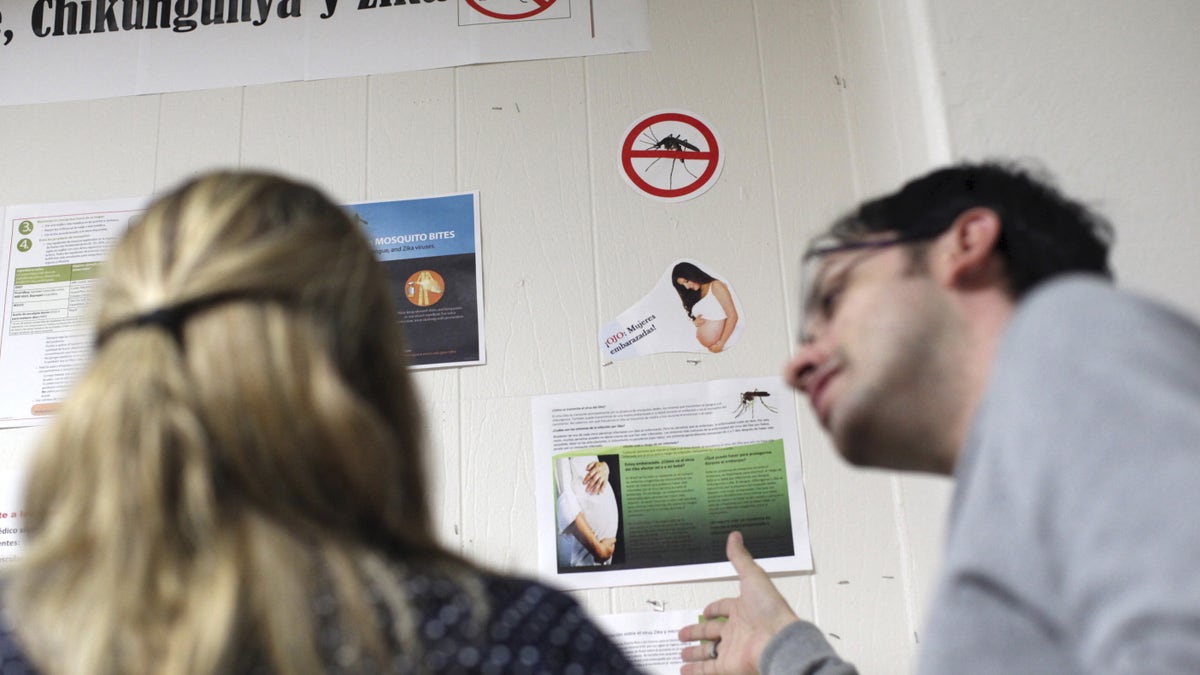
People read information on Zika virus and other mosquito-borne diseases at the Department of Health in San Juan, January 27, 2016. Puerto Rico is to release a report on Zika cases on the island this week which will show that around 18 cases are confirmed, the U.S. territory's health secretary Ana Rius told reporters on Tuesday. REUTERS/Alvin Baez - RTX24BP6
Joey England, a physician specializing in maternal and fetal medicine in Houston, was at her optometrist’s office waiting for an exam when an employee there abruptly asked her, “Should I get pregnant?” The employee, hoping for a child, was anxious about the Zika virus.
Such encounters are increasingly common for physicians in the U.S. amid devastating reports of Zika’s harm to fetuses and its rapid emergence in the Americas. Worried women are inundating doctors with questions about the virus, physicians say, pressing for answers about the risk of infection, symptoms of illness and when to test for the disease. Women who hope to get pregnant want to know if they should wait. Those with travel plans are asking whether to avoid trips to places where Zika may emerge or where it can already be found.
In Houston, located in a county with one of the nation’s highest birthrates, anxiety is “pretty high,” said Dr. England, a maternal-fetal specialist with Children’s Memorial Hermann Hospital.
Public-health officials say the city is among a few areas in the U.S. they are watching for possible local transmission by mosquitoes.
Dr. England said she encourages healthy women ready for a baby not to wait, unless they expect to travel where Zika is spreading, such as Central or South America or the Caribbean. Ultimately, the decision to have a child is one for a woman and her family, Dr. England told the employee.
Zika hasn’t been found circulating in the U.S. mainland, but public-health experts expect it to reach the States. The mosquitoes that can carry Zika, Aedes aegypti and Aedes albopictus, are found from California to the Gulf Coast and along the Eastern Seaboard as far north as southern Maine.
“I spend a lot of time every day talking about Zika,” said Neil Silverman, a clinical professor of obstetrics and gynecology at the University of California, Los Angeles School of Medicine.